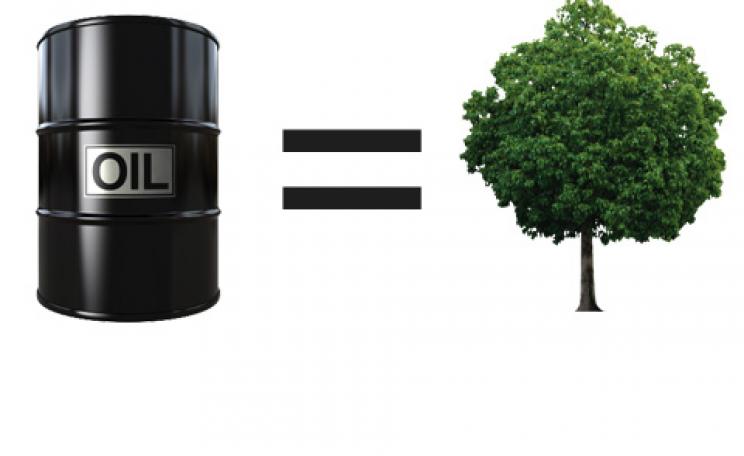Do we merely want to preserve the carbon in rainforests, or do we also want to protect them as habitats?
If 2007 was the year in which the world woke up to climate change, then 2008 was the year in which everyone realised just how damn complicated the whole situation is. On paper, reducing levels of deforestation should be one of the easiest areas to tackle. After all, in the words of Tim Yeo MP, chair of the Parliamentary Environmental Audit Committee, ‘there is no rocket science involved in dealing with deforestation – it is not like carbon capture and storage where we are waiting for a technological breakthrough’.
Indeed not. In practice, however, the situation has become so complicated, with so many different proposals on the table, that very few outside the UN and environmental NGOs have the slightest clue what is happening.
Most of the proposals are happy to come together under the general UN banner of REDD – Reducing Emissions from Deforestation and Degradation. The UN hasn’t fixed on one particular proposal for REDD yet, but the concrete is drying fast and will (probably) be set by December of this year.
Before it is, however, there are a battery of problems to tackle. First, there’s the sticky issue of setting the ‘baselines’ or ‘business as usual rates’ for deforestation. If the baselines are set too far in the future, say between 2008 and 2012, then it’s tantamount to declaring open season on forests for the next four years. By logging voraciously while the baseline is being set, countries/companies could ‘inflate’ their baseline, meaning that the cuts, when they come, would be easier to achieve. On the other hand, set the baselines too far in the past and you will end up rewarding countries that have been pillaging their forests for years, and penalising those that have preserved – or at least not exploited – theirs.
Then comes the issue of who gets the money. Hand it straight to national governments and large chunks could find their way into the pockets of corrupt officials. Some would prefer to see the money allocated on a project basis – direct to the organisation responsible for reducing the deforestation rate. Opponents say this could simply end up rewarding large landowners and born-again logging companies. Some would like to see the money go straight to indigenous people who live in rainforests, not only for moral reasons, but also because they tend to have the best understanding of how to preserve and sustainably manage forest ecosystems.
There are problems, however. Land rights are often poorly established, making it difficult to know whose land is whose, and a number of key nations (the US, Canada, Australia and New Zealand) fought against a clause in last December’s climate change negotiations in Poznan that would have recognised the rights of these indigenous people.
Finally, and perhaps most crucially, how to raise the money in the first place? Here, indeed, is the rub. Plenty of industrialised nations would like to see forestry credits made interchangeable with carbon market credits. This would mean that if a country failed to cut its greenhouse gas emissions in line with its international obligations, it could simply hand over some cash to a forested nation, reduce the deforestation rate a tad and carry on polluting as usual.
Understandably that has raised some hackles, especially of those who point out that the track record of the world’s only fully functioning carbon market – the EU Emissions Trading System – is hardly glowing. In its first three-year period of operation, emissions declined by a paltry 150 million tonnes, and windfall profits were handed to several UK electricity generators. Friends of the Earth warns that commodifying forest carbon in this way could also result in a situation where indigenous people, who have relied on forest products for their survival and livelihood, are simply ‘priced out’ of their increasingly valuable homelands.
One workaround would be to generate money from a ‘market-linked’ mechanism. This would draw finance from the carbon markets, but not directly. So, for example, when permits to pollute are handed out to nations from the UN each year, they could come with a price tag. A proportion of this ‘auction’ fee would fund forest protection.
Others still see this as too complicated and too slow to generate cash at a time when it is urgently needed. Brazil, among others, would like to see industrialised nations simply set up large, well resourced funds to pay for forest preservation. Detractors say that this ‘voluntary’ approach will not generate sustained flows of money for the future.
A confusion of views
In reality, funding is likely to come from a medley of all three approaches. When it does arrive, though, what exactly will the world be getting for its money? Do we merely want to preserve the carbon in rainforests, or do we also want to protect them as habitats, hives of biodiversity and the generators of vital ecosystem services? If we choose the former out of expediency – as looks probable – we could end up with continued logging but compensatory monoculture plantations.
While you’re in the business of preservation, say others, why stop at trees? Managing agricultural lands sustainably can lock in huge amounts of carbon, and preserving peatlands – which in some cases can store more carbon than rainforests – is crucial work. This ‘terrestrial carbon’ approach is popular among some NGOs. For these reasons, some are suggesting that deforestation credits could become ecosystem credits as well. Investment group Canopy Capital is so sure that this will happen it has already invested large sums of money.
Others see the whole system as full of gaping loopholes, and believe that ramping up existing schemes would work better. Friends of the Earth says that the only real option is to cease deforestation rather than ‘reduce’ it. The group says that funding (which should be in the forms of grants, not loans) should address the needs of developing countries, rather than simply hang a big price tag on the branches of trees in their forests.
Some are more cynical still: a report by researchers at Chalmers University of Technology in Sweden in December of last year calculated that even with a carbon price on a hectare of forest, it would still make economic sense to raze it to the ground, pay the appropriate carbon fee, and then grow palm oil for biofuel in its place. It is this sort of analysis that has led some to argue that without tackling the industrialised world’s demand for wood, paper and agricultural products in the fi rst place, REDD may fail before it has even started.
With so many confl icting views, it’s little surprise that opinions have become heated. The only option not on the table is doing nothing. To help you see the wood for the trees in this ongoing debate, we’ve laid out some of the different proposals for tackling the problem in the table below.
------
Do we merely want to preserve the carbon in rainforests, or do we also want to protect them as habitats?








